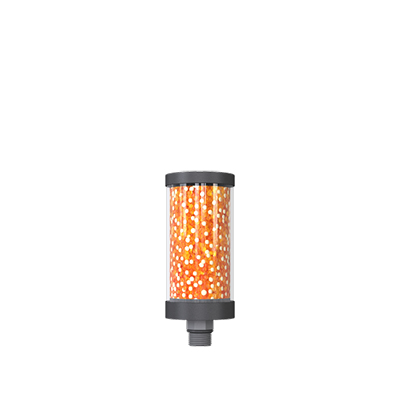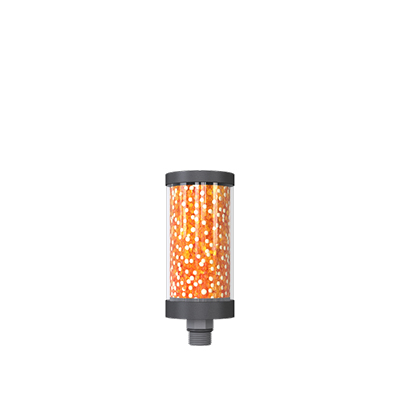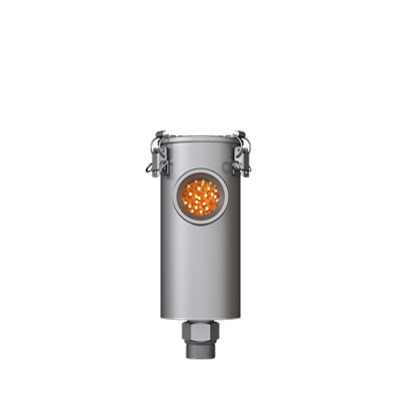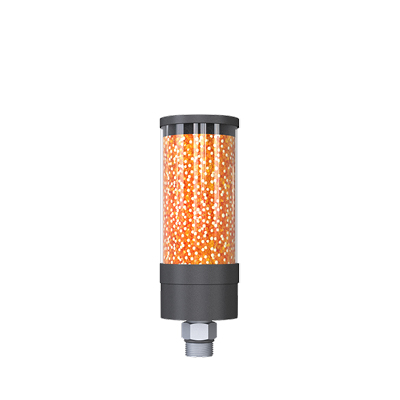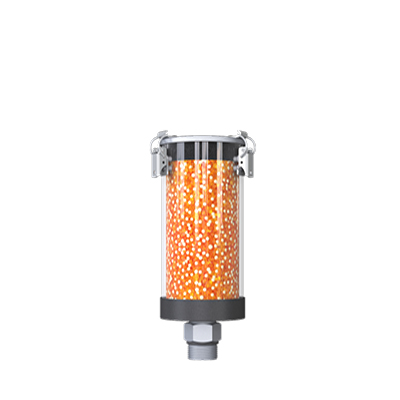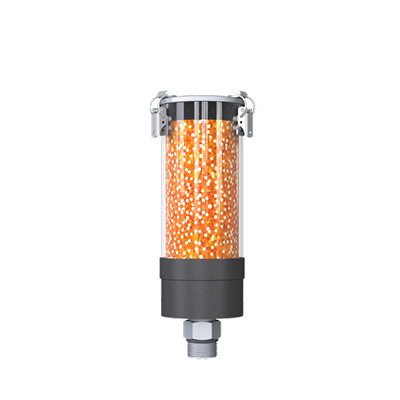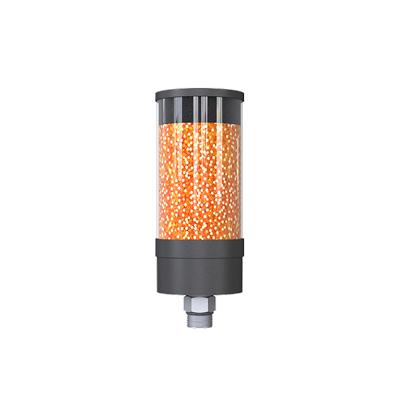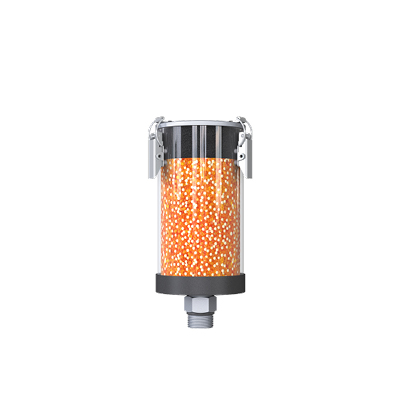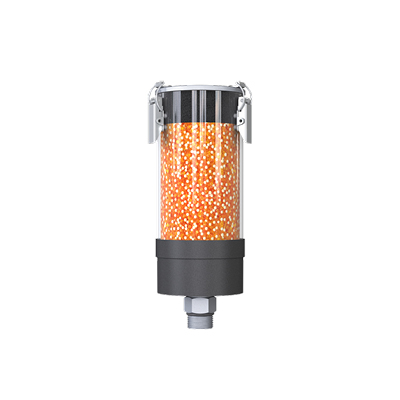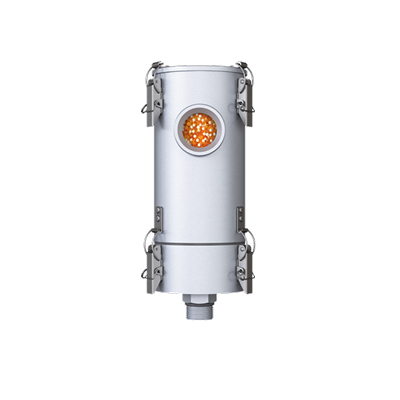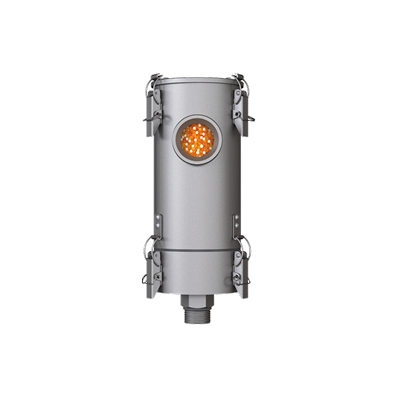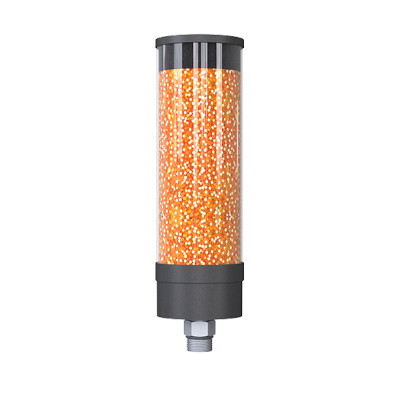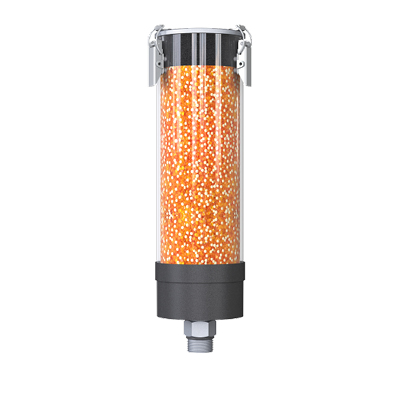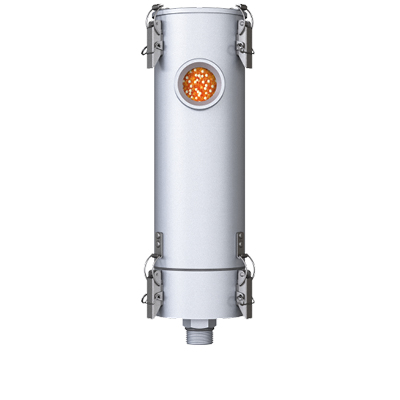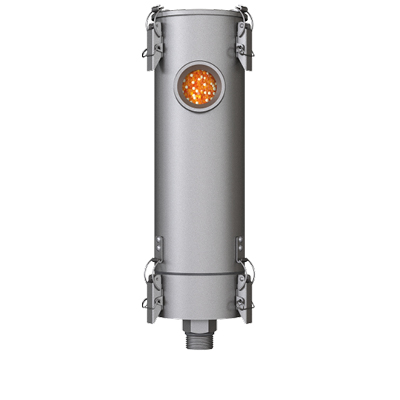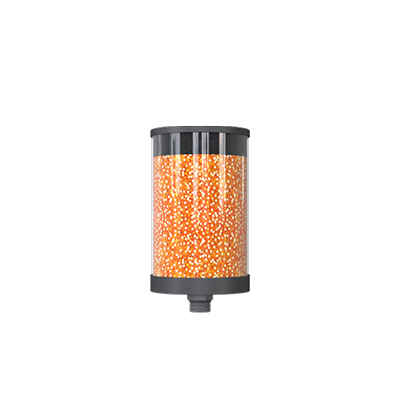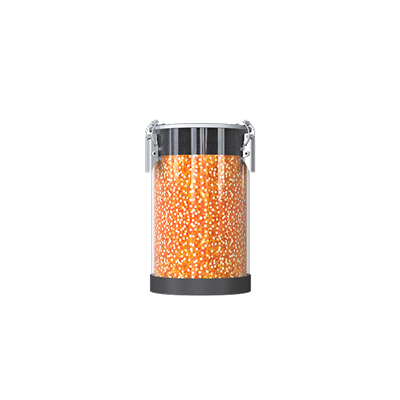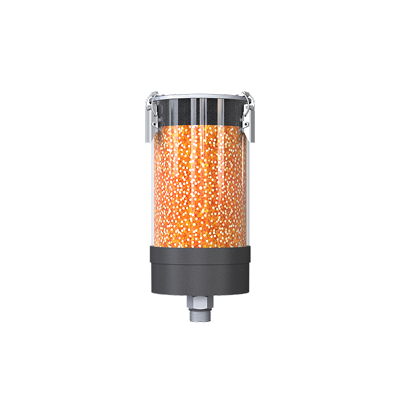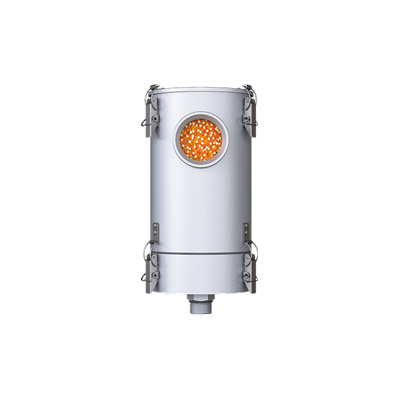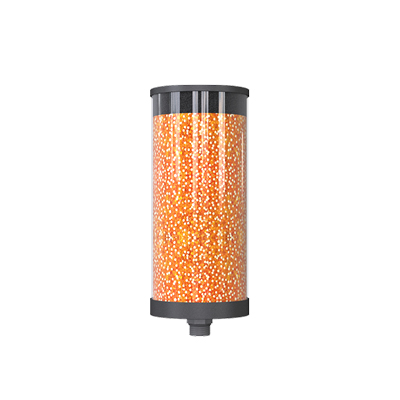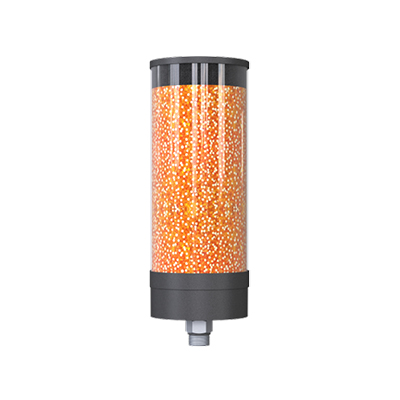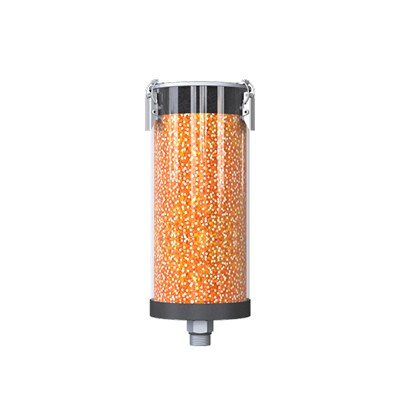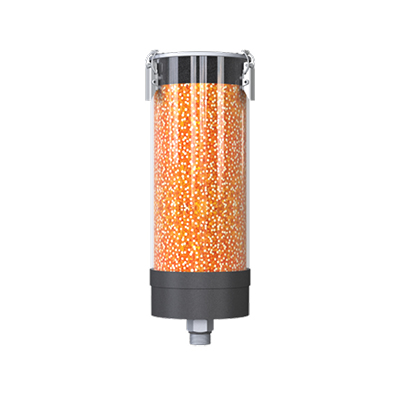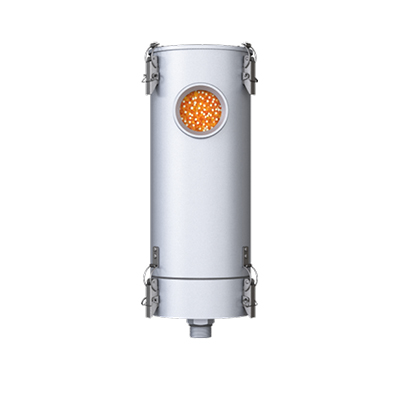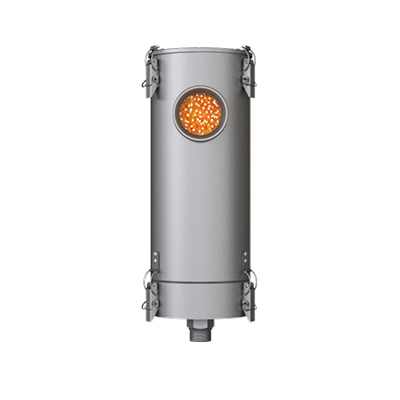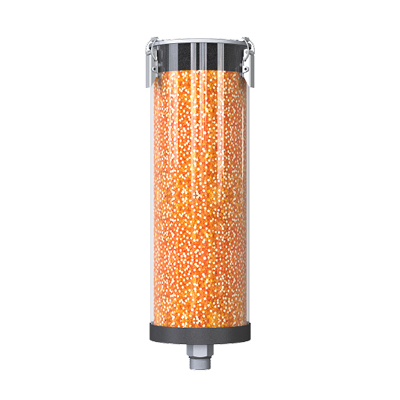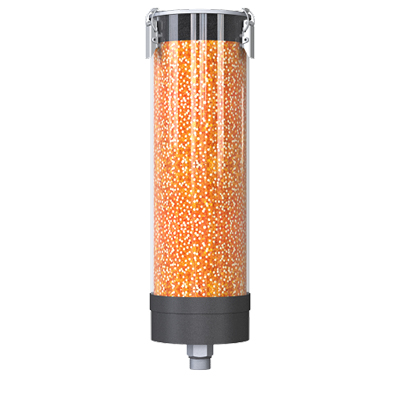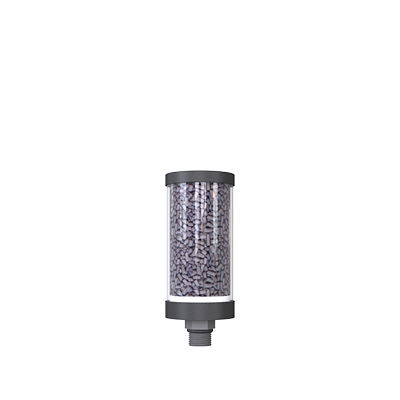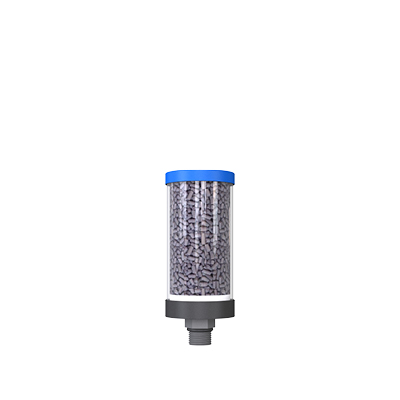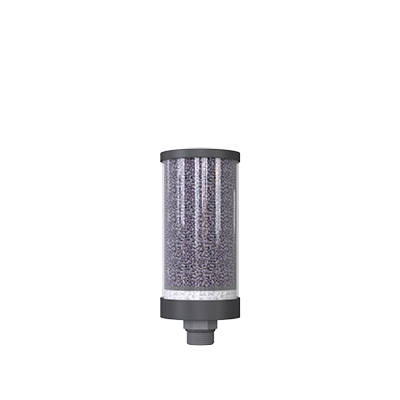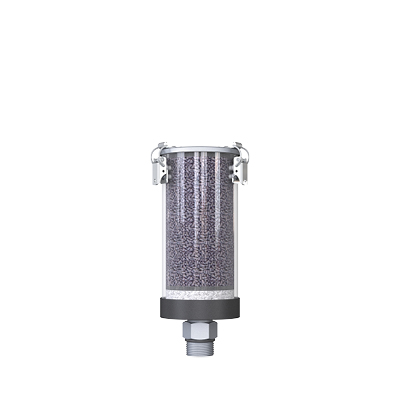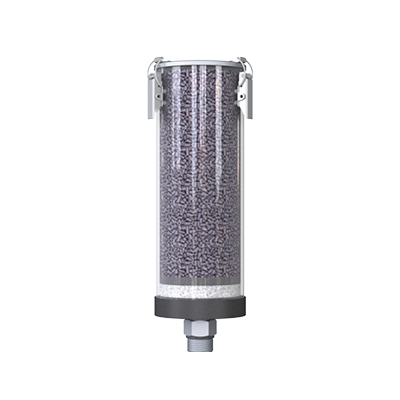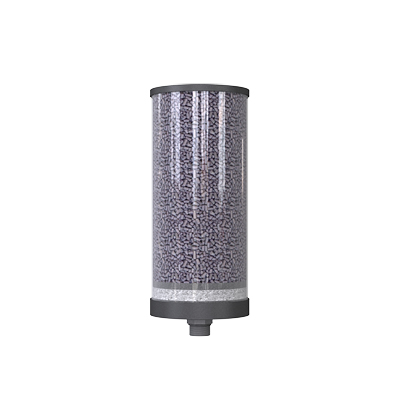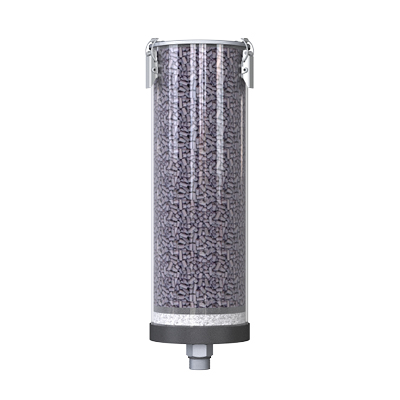Why does the use of an adsorber on hydraulics make sense?
Hydraulic units change the oil level in the tank during operation. If the oil level drops, air flows in to equalize the pressure – if the oil level rises, air is forced out of the hydraulic tank. The moisture contained in the air is thus introduced into the system and condenses as soon as the dew point is reached. Hydrolysis (rapid aging and degradation of additives), corrosion and poorer lubrication are resulting effects. Systems that are exposed to high humidity or temperature fluctuations are particularly affected by this. Our GIEBEL breather dryers provide a remedy by drying incoming air in advance. The desiccant contained in the dehumidifier absorbs the moisture and indicates by a color change when the cartridge is fully loaded and should be replaced.
GIEBEL oil mist separators are used where the escape of oil aerosols from the plant is to be prevented. They make an important contribution to improving air quality and protecting employees.
Adsorber series for hydraulic power packs.
Dehumidifier / Ventilation dryer
for the separation of humidity
Oil mist separator / Aerosol filter
for separation of oil mist & pollutants
How to find the right size.
Adsorbers for drying the supply air
Please click on the tank-/shuttle volume below
Adsorbers for the separation of pollutants
Please click on the tank-/shuttle volume below









